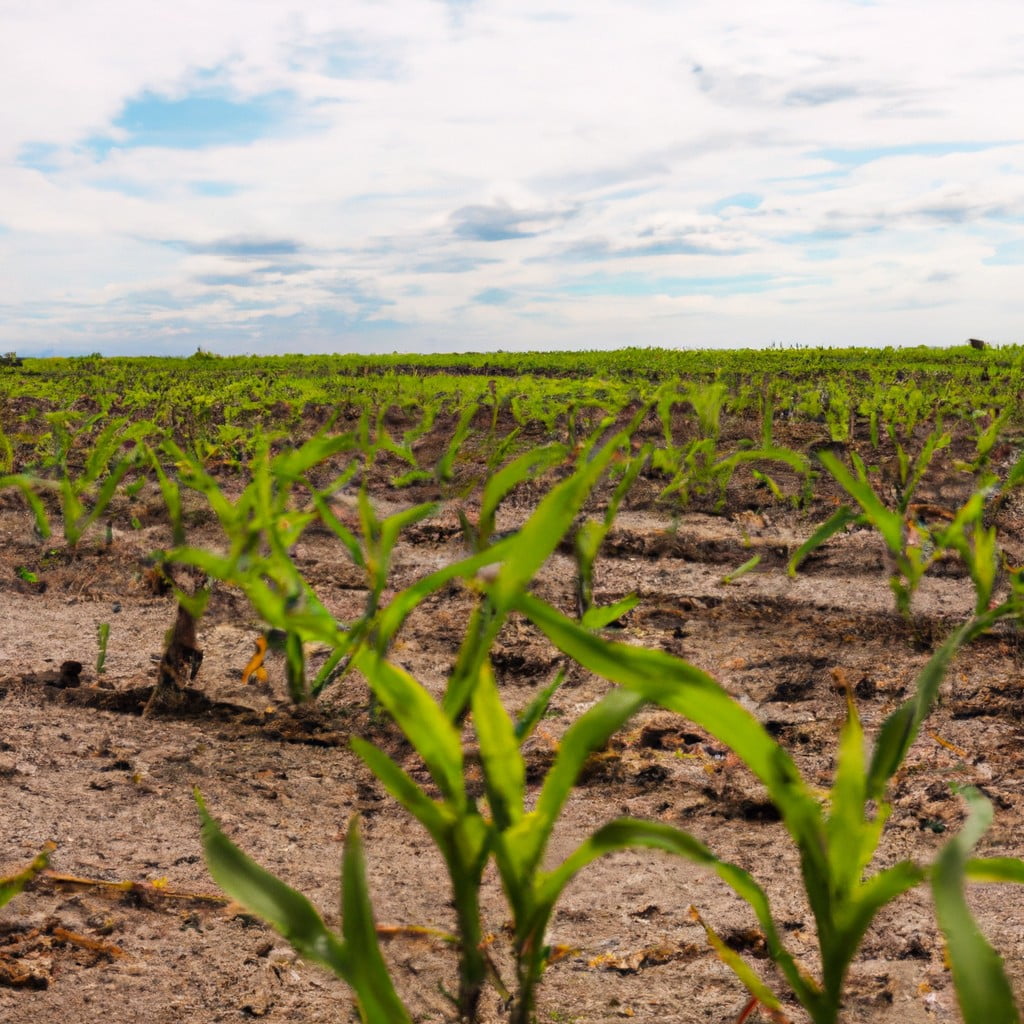Yes, regenerative farming is sustainable as it promotes soil health, reduces carbon emissions, supports biodiversity, and encourages a resilient local economy.
Regenerative farming is indeed a sustainable approach to agriculture, as it focuses on replenishing the health and vitality of the soil, promoting biodiversity, and sequestering carbon to combat climate change.
This method goes beyond merely “doing less harm” to actively improving the ecosystems in which it operates.
Throughout this article, we’ll delve deeper into how regenerative farming achieves sustainability, the principles behind it, and the long-term benefits it offers for our planet, our health, and our food security.
Stay with us to understand all the intricate details of this eco-friendly farming method.
Key takeaways:
- Regenerative farming promotes soil health and fertility.
- It supports biodiversity and ecosystem resilience.
- It reduces carbon emissions and mitigates climate change.
- Regenerative farming improves water retention and reduces soil erosion.
- It has economic viability and supports local economies.
Look Inside:
Understanding Regenerative Farming

Regenerative farming hinges on a series of techniques that mimic nature to rehabilitate and enhance the entire ecosystem of the farm. By rotating crops and integrating livestock, these techniques replenish soil fertility naturally – unlike conventional farming that leans heavily on artificial fertilizers.
Additionally, regenerative farming engages in minimal tilling, if at all, which helps preserve the diverse ecosystem of microorganisms essential for healthy soil. The aim is to create a sustainable, self-sufficient farm that not only continually renews its resources but also contributes positively to the broader environment.
This holistic approach to farming is central to understanding why regenerative farming is truly sustainable.
What Is Regenerative Agriculture?
Regenerative agriculture revolves around a set of farming principles that enhances the natural resources it uses, rather than depleting them. This holistic approach is rooted in the philosophy of nurturing a diversity of life both above and below the soil. In practice, it emphasizes the importance of soil health, encouraging practices such as cover cropping, diversified crop rotations, and minimal tillage.
The aim of these practices is to increase organic matter content in the soil, leading to improved soil structure, moisture retention, and nutrient cycling. This, in turn, enables the ecosystem to naturally regulate pests and diseases, reducing dependency on synthetic pesticides and fertilizers. Moreover, healthy soil sequesters carbon from the atmosphere, making regenerative farming an effective response to climate change. Lastly, it nurtures biodiversity by providing natural habitats for beneficial insects, birds, and other wildlife—an important step towards building a resilient food system.
The Principles of Regenerative Agriculture
Regenerative agriculture adheres primarily to six key principles. These are:
- Soil Health: It focuses on improving soil fertility and structure through practices like composting, cover cropping, and reduced tillage.
- Biodiversity: It encourages a varied ecosystem by integrating crops, livestock, and wild flora and fauna.
- Water Cycle Management: By enhancing soil health, water retention capability improves, which in turn aids in managing water cycles effectively.
- Carbon Sequestration: Techniques such as agroforestry, permaculture and conservation tillage are employed to capture more atmospheric carbon in the soil.
- Resilience: These methods enhance system adaptability to changing climate conditions, pests, and diseases.
- Local economy support: It promotes fair and profitable trading relationships that respect both farmers and the land.
These concepts help transform agriculture from a primary contributor to climate change into a potential solution, influencing an array of environmental issues.
Comparing Regenerative Farming to Conventional Methods
When we draw a comparison, conventional farming often relies on artificial fertilizers and pesticides, monocultures, and intensive tillage. These methods can degrade soil health, reduce biodiversity, and emit large quantities of greenhouse gases.
On the other hand, regenerative farming uses cover crops, crop rotation, and natural pest management to boost soil fertility and biodiversity. It embraces livestock grazing practices that mimic natural cycles, achieving carbon sequestration in the soil. Consequently, it leads to improved crop resilience, reduced farmer dependence on synthetic inputs, and contribution to climate change mitigation. This stark contrast underpins regenerative farming’s sustainability appeal over conventional agricultural practices.
Environmental Impact of Regenerative Farming
Regenerative farming presents crucial benefits for the environment. It maintains the fertility of the soil by encouraging its natural fertility mechanisms instead of relying on synthetic inputs. By constantly covering the soil and a diversity of crops, it enriches the soil biodiversity, which plays a critical role in nutrient cycling and disease suppression. Moreover, it reduces soil erosion and water runoff, improving water retention during both periods of drought and heavy rain.
One of the significant concerns of the 21st century is the high carbon dioxide level in the atmosphere. Regenerative agriculture contributes to mitigating this problem by sequestering carbon from the atmosphere back into the ground. Research shows that healthier soils with higher organic content can store much more carbon dioxide.
Another environmental advantage of regenerative farming is preserving biodiversity. Conventional farming often leads to mono-crop fields, providing the same habitat that suits only a limited number of species. In contrast, regenerative farming encourages a diversity of plants and animals, thereby supporting a broader range of wildlife, beneficial insects, and microorganisms in the soil. This improved biodiversity is essential in preserving the health of the planet and the sustainability of food systems.
Lastly, regenerative farming promotes the responsible use of resources. It emphasizes minimizing off-farm inputs and recycling on-farm resources, thereby reducing reliance on non-renewable resources, minimizing waste, and promoting energy efficiency.
In essence, the environmental impact of regenerative farming addresses a wide array of ecological challenges we currently face, from soil degradation and water concerns to biodiversity loss and climate change.
Regenerative Farming and Climate Change
Firstly, regenerative farming practices aim to capture carbon dioxide from the atmosphere and store it in the soil. This is known as carbon sequestration, which forms an essential part of efforts to tackle climate change. The increased organic matter in the soil not only stores carbon but also contributes to overall soil health, fertility, and productivity.
Secondly, by promoting biodiversity within and around the farm, these practices create ecosystems that are more resistant to extreme weather conditions and pest invasions. Such resilience reduces reliance on heavy machinery and synthetic inputs like pesticides and fertilizers, further decreasing carbon emissions.
Lastly, regenerative farming creates closed-loop systems. By recycling nutrients and organic matter, farms become self-sustaining and less dependent on non-renewable resources. This circularity is another key way regenerative farming addresses climate change and improves sustainability.
Economic Viability of Regenerative Farming
Investigating the economic aspect, regenerative farming emerges as a financially viable choice for farmers. By cultivating a greater variety of crops, farmers can diversify their income sources and become less dependent on single crop yields, reducing financial risks.
The use of organic matter for soil efficacy decreases reliance on artificial fertilizers, yielding cost savings. Additionally, healthy soils result in stronger, more resilient crops that are less susceptible to pests or diseases, potentially lowering pesticide usage and related expenses.
This method also favors small-scale local economies, as consumers are increasingly supporting produce that is sustainable, promoting significant local economic growth. Importantly, it also prepares farmers for stricter environmental regulations that are likely to come, avoiding later transition costs.
In conclusion, while regenerative farming might require higher initial investments, in the long run, it is likely to prove economically beneficial.
The Future of Regenerative Farming: Is It Sustainable?
Looking ahead, it’s clear that although regenerative farming poses some challenges, its potential benefits to soil health, biodiversity preservation, and local economies make it a compelling alternative to current agricultural practices.
To ensure its sustainability, it’s important to develop regulatory policies and financial incentives that support farmers in the transition towards more regenerative methods.
Additionally, consumer education about the benefits of regeneratively grown food can help to drive demand and therefore increase the viability of these farming practices.
Ultimately, our collective choices in farming and food consumption will determine the future ecosystem health and the wellness of our planet.
FAQ
Why is regenerative agriculture not sustainable?
Regenerative agriculture is not sustainable due to the insufficient land available for scaling regenerative methods and its inability to address animal welfare issues and prevent cruelty in the animal agriculture industry.
Is regenerative farming the same as sustainable farming?
No, regenerative farming and sustainable farming are not the same; while sustainable farming aims to maintain existing conditions, regenerative farming works to improve and restore the ecosystem’s productivity.
What makes regenerative agriculture sustainable?
Regenerative agriculture is sustainable because it employs a holistic approach that increases biodiversity, enriches soil health, improves water systems, and boosts ecosystem services, contributing to continuous land renewal and environmental enhancement.
How can regenerative farming techniques contribute to long-term sustainability in agriculture?
Regenerative farming techniques contribute to long-term sustainability in agriculture by enhancing soil health, promoting biodiversity, reducing the use of chemical inputs, and sequestering carbon, fostering a healthier ecosystem that can also mitigate climate change.
What are potential challenges in implementing regenerative agricultural practices for sustainability?
Potential challenges in implementing regenerative agricultural practices for sustainability include initial financial investment, lack of technical knowledge, unpredictable weather patterns, and resistance to change within farming communities.
How do sustainable farming practices compare with regenerative ones in preventing soil erosion?
While both sustainable and regenerative farming methods prevent soil erosion, regenerative agriculture tends to be more effective as it emphasizes rebuilding soil health through techniques such as cover crops, crop rotation and minimal tillage.




